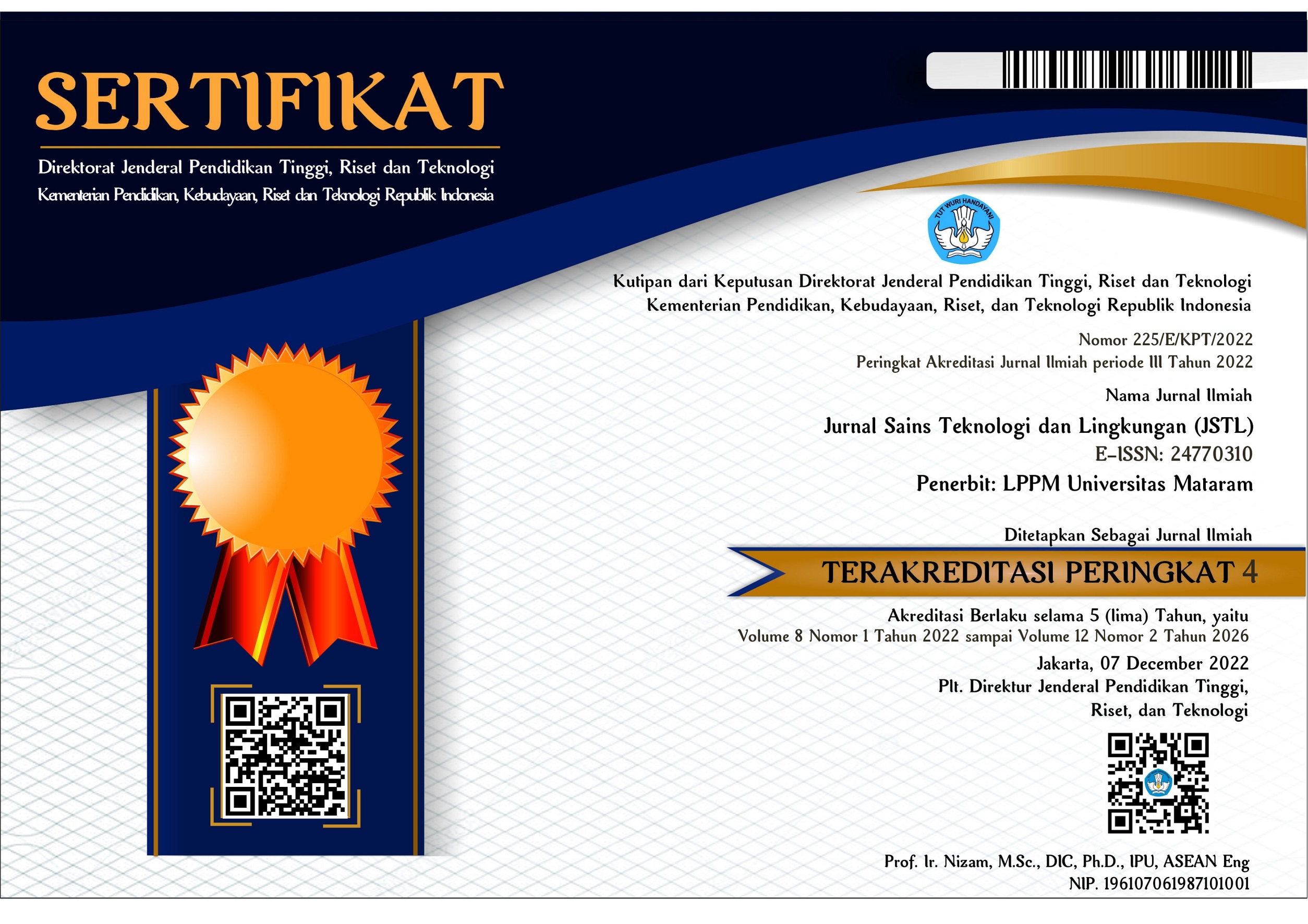Pemberian Pakan Basah pada Ayam Buras untuk Menurunkan Rasio Konversi Pakan (FCR)
DOI:
https://doi.org/10.29303/jstl.v4i2.93Keywords:
native chicken, wet feed, productivity, bio L probioticsAbstract
Native chicken is one of the livestock that is widely maintained in rural areas in Bali, to fulfil meat and eggs as a food consumption and also for religious ceremonies. However, the population of native chicken continues to decline until 4.15% in average every year due to high price of feed and nature behaviour of the chicken that picks food either by mouth or legs causes a lot of food to be wasted. To minimize the amount of wasted food, given the wet form of feed given in accordance with the needs for production. The study was carried out in Tembuku Subdistrict, Bangli Regency, using 90 laying hens which were divided into 3 group of treatments each with 30 chickens and differentiated between wet feed and dry (ordinary) feed. Where P0 is control, P1 is given Bio L Probiotics 3 cc.liter-1 of drinking water and P2: P1 + Herbs 4 cc.liter-1 of drinking water. The results showed that P0B: 56.71% P0K: 57.54%; P1B: 58.9; P1K 59.73% and P2B: 61.08; P2K: 60.15. The highest productivity were found at P2B and P2K. While the FCR achieved by each treatment were P0B: 3.35; P0K; 3.56; P1B: 3.07; P1K: 3.24 and P2B: 2.98; P2K: 3.13. These results indicate that the providing of wet feed produces a lower FCR than dry feed. The providing of Bio L probiotics could increase productivityDownloads
Published
2018-12-25
Issue
Section
Articles



1.png)











